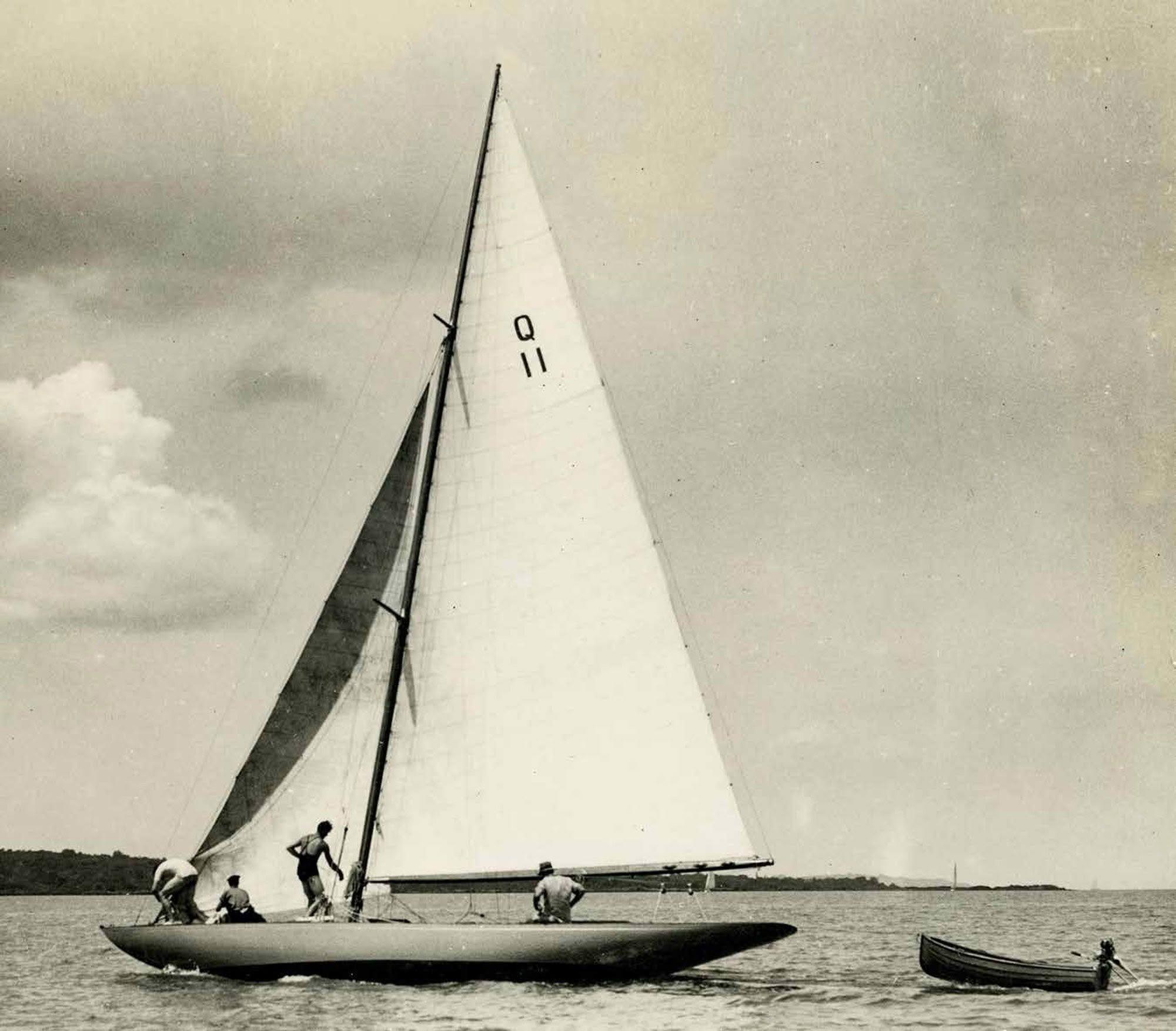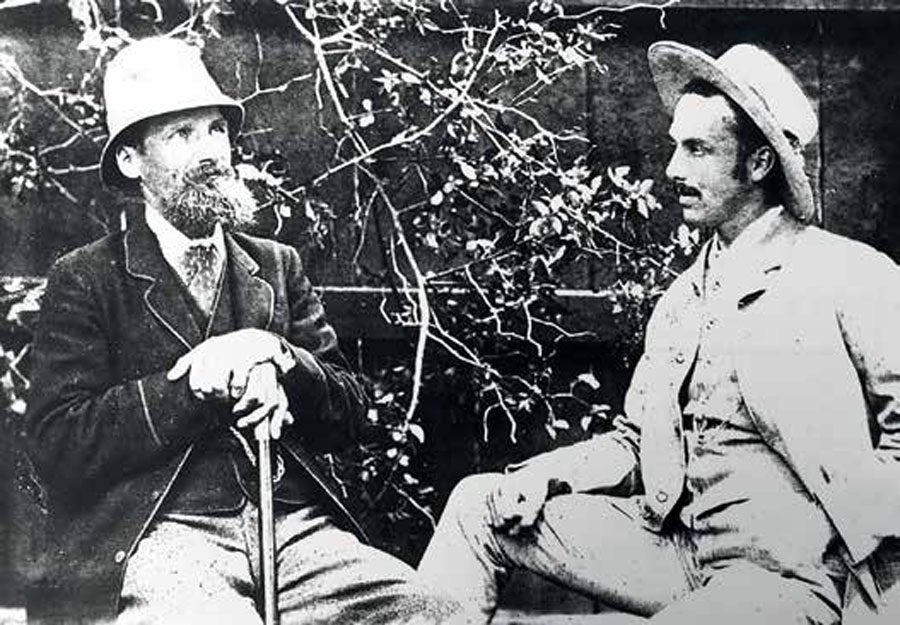

The Sanderson brothers; Frank Sanderson was the victor of the match race on the Waitematā on December 9, 1882 for a cup between his three-tonner Truant and Cramond and Fairs’ Sybil. Fairs challenged for a rematch for £5 a side but Frank did not rise to it.

The 1883 Anniversary Regatta was only a few weeks away to resolve the issue. It seems too that Frank was so dedicated an amateur that sailing for money, almost universal in Auckland at the time, was against his principles.
With the bookies, however, Truant and Sybil were even favourites for the ‘Yachts under 4 tons’ race. In preparation for the contest Sybil was brought up on James Clare’s slip and Truant at Mechanics’ Bay.
The entries were McKenzie’s Last Adieu (of which nothing was heard before the regatta or since), Frank Sanderson and Fred Moore’s Truant, Sanders’ Tui, a four-year-old 20ft former Open Sailing Boat now decked in (to qualify as a ‘yacht’), the Seagar brother’s Cygnet, an iron yacht built at their foundry in March 1882, and commonly referred to as “the tank”, Florence, built in November 1882 by A. Neill at Ponsonby as a 20ft Open Sailing Boat but, after performing poorly in that class, now decked in, Mackie’s Ethel May, the former Ariel, and Cramond and Fairs’ Sybil. ‘Waitemata’, in the Auckland Star, gave the nod to Sybil.
On Regatta Day 1883, Sybil led from the start. Then, as Truant was moving to overhaul her in the Rangitoto Channel, her throat halyards parted, letting the mainsail down with a run.
By the time this was sorted out, Sybil’s lead was unassailable and Sanderson had to be content with a second place. The inevitable challenge to a match race, for £5 a side, came off in February, resulting in a close win for Sybil by one minute 15 seconds. I am not sure how Frank handled his principles.
We get an insight into local cruising in Truant when Frank Sanderson wrote an account of her 1883 Easter cruise to Waiheke, A Holiday Cruise in the Hauraki Gulf, published in the Queenslander and the Brisbane Courier and later picked up in Auckland papers. It was entertaining but lengthy and florid in the Boys’ Own Paper style of the period. Then, on April 29, Frank sent a letter to his brother Fred, now teaching at Puriri, Thames.
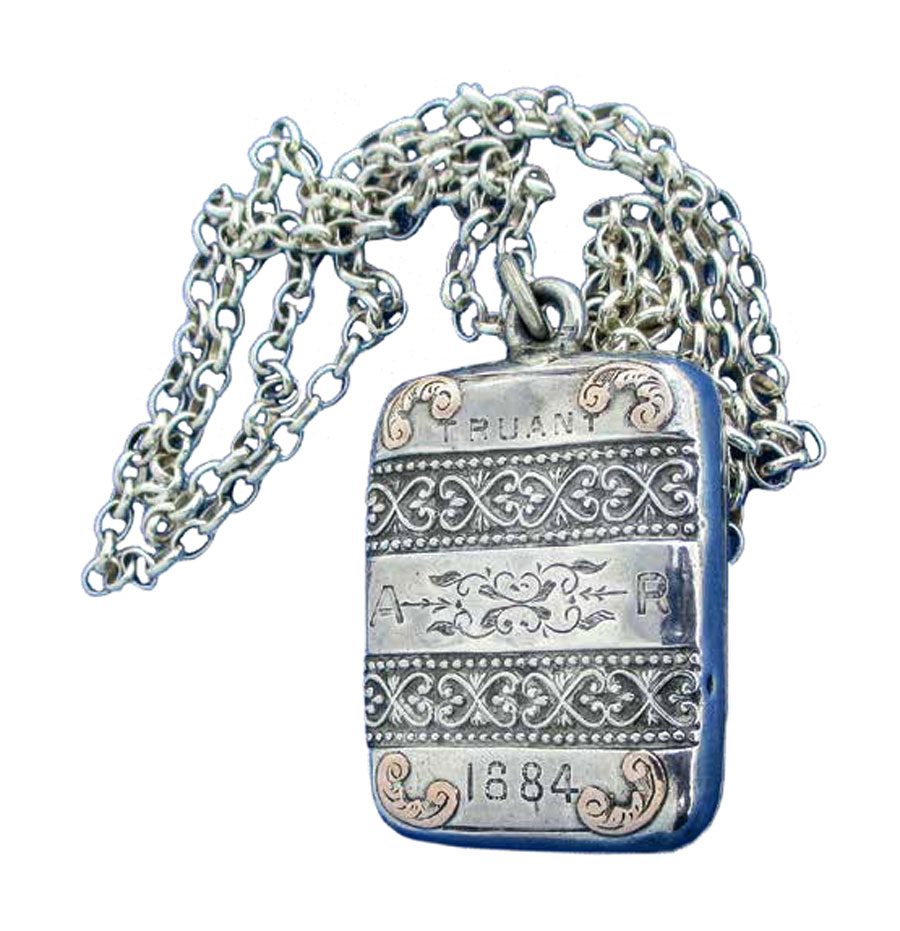
“The Auriga has been in for 10 days. Her captain was out with us in the Truant yesterday afternoon. The Arawa and Rita were having a race around Tiri and we went for a mile past Rangitoto to meet them. We did not get home till eight o’clock pm. The Arawa won the race by ½ or ¾ mile. The Saturday before last Father and I took the skipper out for a drive – Onehunga, Mangere, Otahuhu and Remuera. Peachey’s punt has been missing for some days. She was found by the Scotchman and left at Drunken Bay quarries. Fred, Tom and I went down for it today in the Truant. We started about 11 o’clock and did not get home until eight this evening; almost dead calm all day – beat the City of Naples as drifting down had to use sweeps from D. Bay to Lighthouse thence home, nice breeze. Saw a lot of penguins off Drunken Bay.”
The Auriga was a 518-ton barque, Captain Stone, for which Frank Sanderson’s employer, L.D. Nathan & Co, were the Auckland agents. The Logan Arawa and the Bailey Rita were the two top racing yachts in Auckland, while City of Naples was a big fishing boat owned by Frank Williams and sailed by legendary skipper Ike Hunt.
Both Sybil and Truant were laid up at St George’s Bay over the winter for overhaul and painting and were launched in October for the season. The North Shore Regatta, usually held in November was abandoned as economic conditions in New Zealand had deteriorated in what was to be called “the Long Depression” which had started around 1880 and lasted until 1892.
The 1884 Auckland Anniversary Regatta still went ahead and was held on January 29 as usual. In the “Yachts under 4 tons” race the entrants were Tui, Sybil, Truant and another little yacht, the Robert Logan-built Comet, built at the end of the 1882 season and entered by W. J. Phillipson. Truant won a hardfought race, beating Sybil to the finish by 2½ minutes, winning £5 and a Cup presented by jeweller Mr. Kohn valued at £5. Frank appears to have elected to spend the cash on a handsome silver locket, still in the Sanderson family.
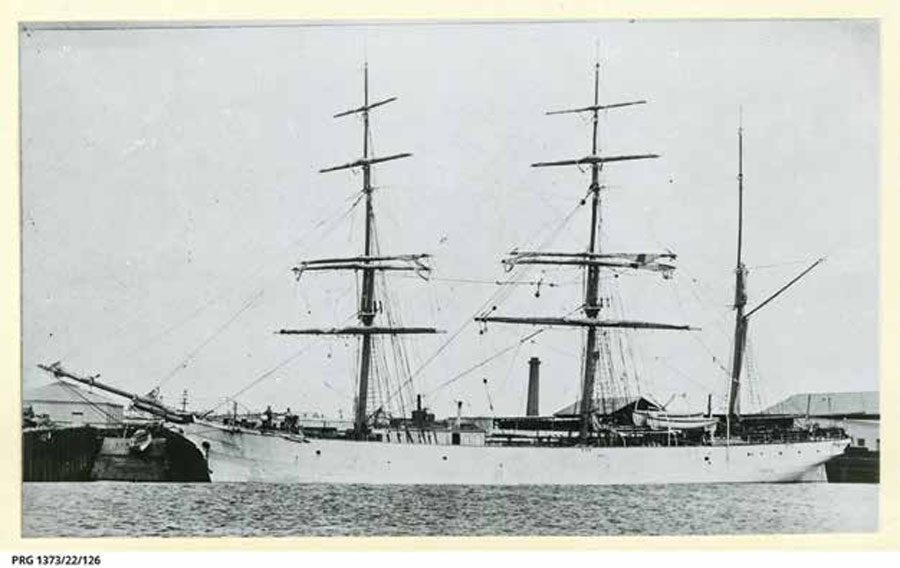
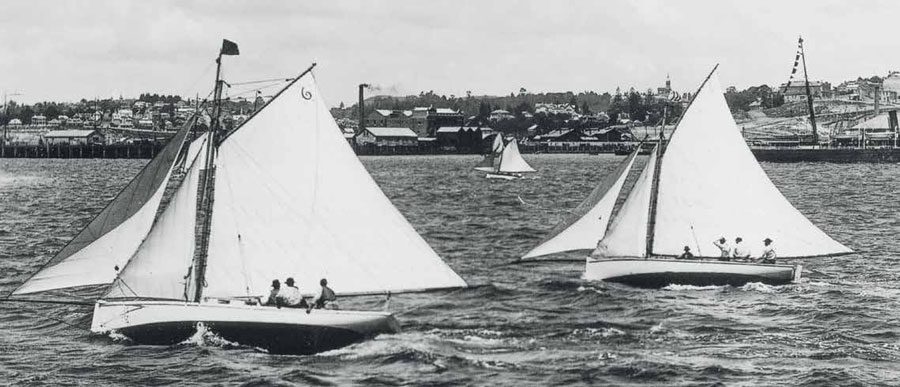
The Auckland Star reported, “a most exciting incident occurred. When the Truant was rounding the Sandspit buoy her crew were employed in shaking out the water sail when one of them, named Le Roy, fell overboard. With great presence of mind, he clutched the mainsail just as the yacht was leaving him. The Truant was immediately brought up into the wind, and the unfortunate one was speedily hauled on board. The yacht then proceeded on her course, eventually winning the race.”
Frank Sanderson was, naturally, involved in the St George’s Bay Rowing Club and featured in many of its events, particularly the whaleboat racing which was the new craze throughout New Zealand. In late March the crew of the whaleboat Young Colonial contained names that rang through the years in Auckland yachting including Tom Kilfoyle (later of the Logan yacht Aorere), Fred Moore (part owner of Truant), Frank Sanderson, F. Peachey and Harold Hudson. Frank was the first Captain of the club and his brother Fred the Treasurer. Frank was also the starter for the Judge’s Bay Amateur Regatta which featured dinghy and Rob Roy canoe racing, but no prizemoney.
In the meantime, Frank and Fred’s father Francis Bradley Sanderson had bought a General Store and Gum Merchants business at Totara North and was also Postmaster by 1885. Frank and his mother continued to live in Parnell.
Truant did not enter the 1885 Anniversary Regatta. The “Yachts under 4 tons” race looked as if it would be dominated by new fishing boats like the Bailey-built Italy, The Brothers and the converted Open Sailing Boat Shrimp, both from Hewson & Melville, sailed by crack fishing boat skippers. Sybil did enter but was outclassed. The glamour event was the Champion Whaleboat rowing event with a first prize of £50!
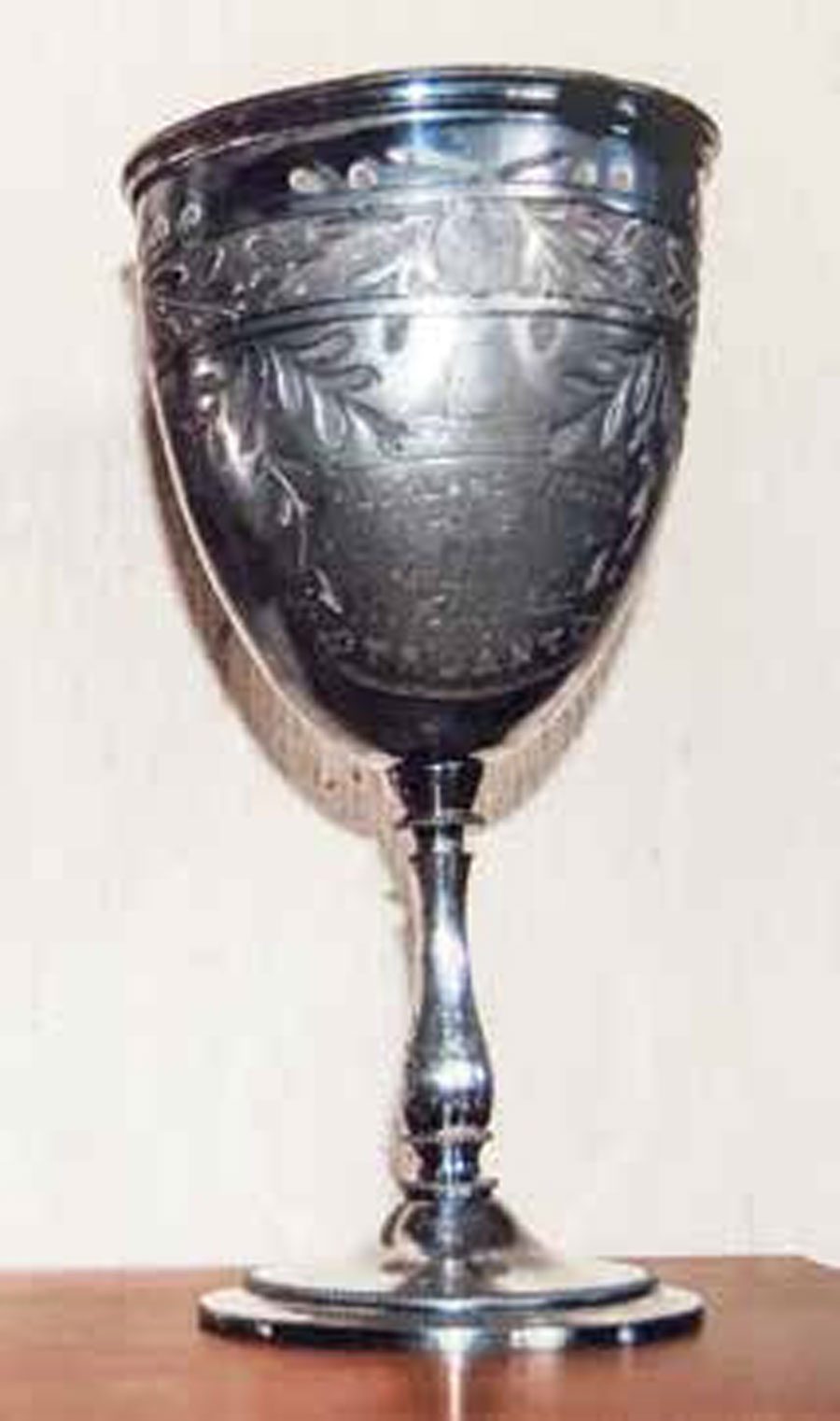

A major event occurred at Easter 1885, the launch of the 24-footer Manola, which was to change the scene in Auckland yachting. William Holder of St. Georges Bay Road had commissioned Charles Bailey Sr to build him a centreboard ‘smack’ in the new style of fishing boats, like the Bailey-built 24ft Italy and 22ft Welcome Jack but also being built by several Auckland builders for fishermen customers, boats that in the next decade came to be known as ‘mullet boats’.
Their principal use was for netting mullet in the shallows to the east of the Waitematā where a ton or so of fish could be put in the open hold and raced back to the Auckland wharves for sale while still fresh, often into the prevailing westerlies. So, the boats had to be of shoal draft, of large carrying capacity and fast sailers. Manola, however, was to be used as a purely pleasure craft, to capture the ‘under 4 ton’ class that yachts like Truant had dominated.
Manola was of ‘yacht finish’ and was hauled out after every race in Bill Holder’s boat shed on the beach at St. George’s Bay and black-leaded before each race, reputedly mixed with stale beer. Her rigging and sails were of the highest quality. She was a racing machine. She proved almost invincible from the start.
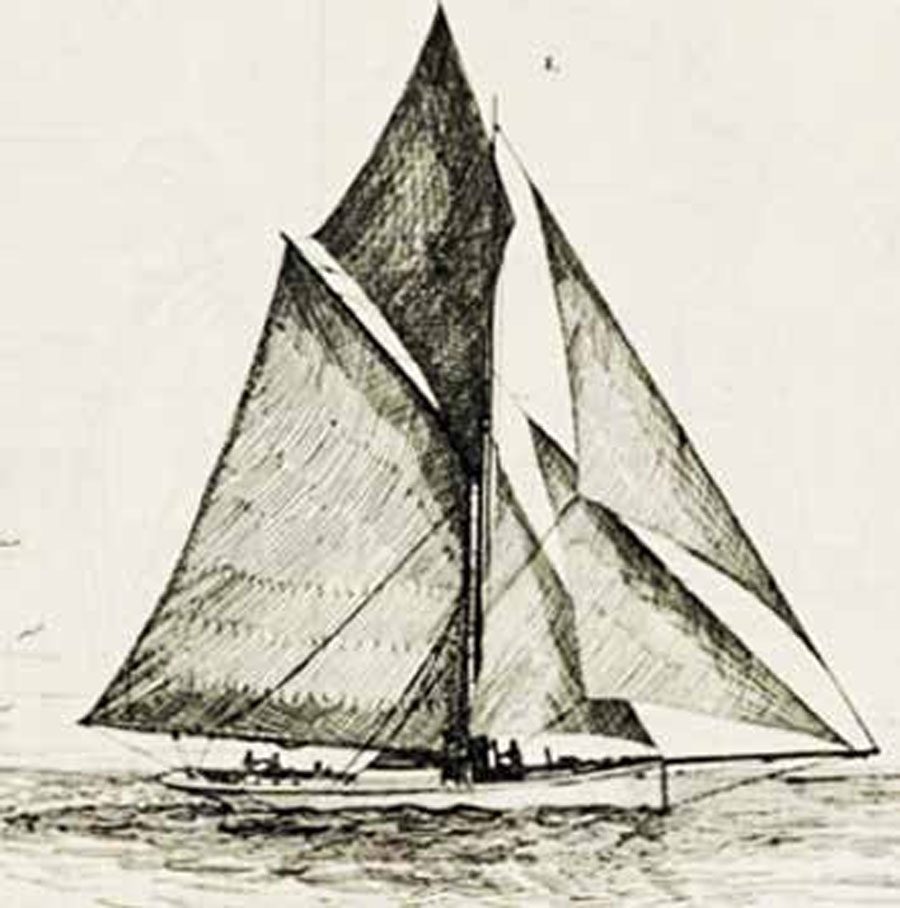
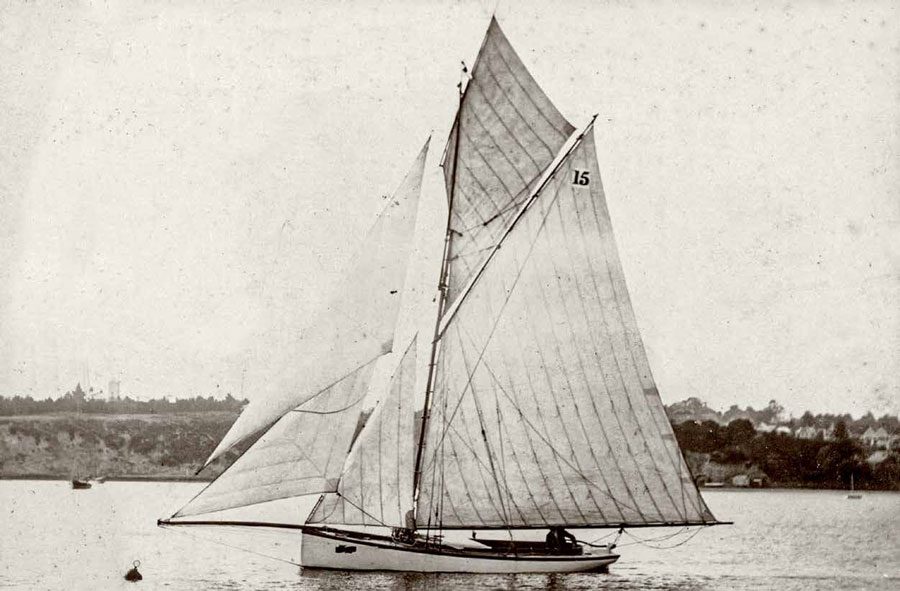
The day after she was launched, sailed by crack fisherman skipper Barlow Madigan, Manola won the Ponsonby Regatta ‘Yachts under 4 tons’ race by nine lengths from Magic, another Open Sailing Boat, built by Robert Logan in 1881, now decked in to qualify as a yacht, trailed by Ethel and Mignonette.
Frank Sanderson’s involvement at Nathan’s was becoming greater. His father was calling for help in his Totara North business. Manola and the clones that followed in her heels had now outclassed Truant. His brother Fred Sanderson decided to give up teaching and follow his father North to use his business skills for the family good.
Frank put Truant on the market. BNZ

